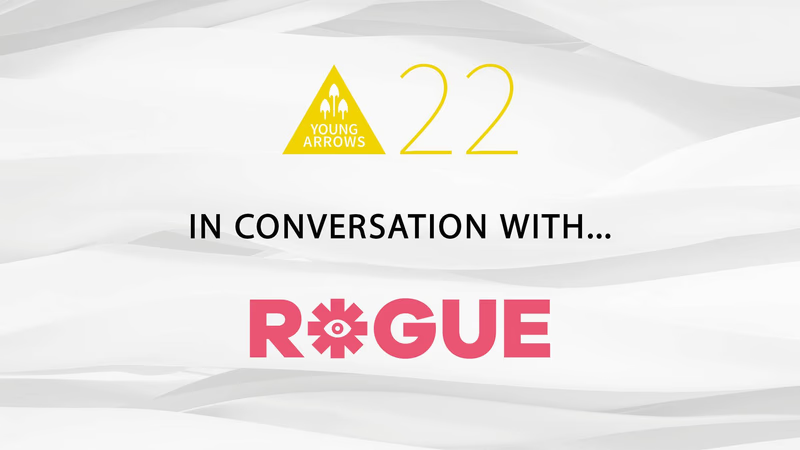In Conversation with Publicis Poke
27 September 2022

The offices of Publicis Poke are sequestered on the third floor of what was once ‘the doughnut’, or BBC Television Centre on Wood Lane. Almost a decade after the BBC left for new premises, three TV studios remain, producing the likes of the Graham Norton Show, while the 160 or so staff who make up integrated comms agency Publicis Poke are located on the third floor of 2, Television Centre, part of a new media hub with some high-end hospitality venues attached.
From its home in Television Centre, when it comes to creativity Publicis Poke takes the perspective ‘we are what we make’. And for Chief Production Officer Colin Hickson, the foundation supporting the agency’s work and ethos is a simple one: “We always have to question: ‘why should anyone listen’, and even more importantly: ‘why should anyone care’ about what we have to say.” A simple enough mantra, even more important in this day and age, but a tough one to rigorously adhere to.
“Then we have a perspective that we can use to sense-check our work against,” continues Hickson. “We call it Sharp Commercial Creativity. Because at the end of the day, we are what we make and what we make needs to work. Meaning, it’s what we put out in the public domain that really matters. That’s how we’ll be judged.”
Publicis Poke’s brand stable includes big-hitters such as Morrisons, BT, Renault, Heineken, P&O and Tourism Ireland, for whom its tie-up with Game of Thrones, featuring six ornate stained-glass windows, earned the agency no less than 30 awards. That’s some serious hardware. Poke has also been busily filling the public domain with powerful cross-media campaigns since it joined the Publicis stable back in 2013. Its roster of 50 staff has since grown to 160, and that growth is dependent on talent turning ideas into actualities, and that talent depends on support, especially in its early days. As such, PublicisPoke has its own incubator programme to support, nurture and unleash new talent.
“Our various incubator programmes are part of a group-wide Creative Access scheme,” says Hickson, “looking to give people from non-traditional backgrounds introduction to the communications industry. Depending on the specific interest of the candidate,” he continues, “they would fit in as a regular member of the agency team – albeit with a mentor and some additional oversight – and from our latest group of incubees, we’ve already hired two.”
He points to their work on a hard-hitting new campaign in the making. “We had them working on a pitch for the amazing folk at creative-conscience.org.uk,” he says. “It’s a campaign idea directed at domestic violence, but focusing on a very specific form of control and abuse – economic abuse. The team were amazing. The work is really needed and talks in a relevant and caring way. Fingers crossed,” he adds, “that will come to fruition.”

When it comes to what to look for when you’re looking to hire new talent, Hickson points to three key factors: an ability to care, to think and to collaborate. “An easy reply,” he says, “but it’s much harder to find the genuine article.” And when it comes to in-house training, he points to the importance of balancing craft and idea. While ideas fuel the craft of making a campaign, without that craft, ideas have nowhere to go or lack the ability to stand out; “We definitely require both,” says Hickson. “Otherwise if one over dominates the other it simply becomes form over function, and vice versa.”
The new generation of creatives he’s seen starting to come through come with certain identifiable characteristics that make them stand out from earlier generations. “From my perspective,” he says, “I’d say three particular things. One, that the proliferation of platforms has created a much wider and accessible means of sharing their creativity. Which the upcoming talent have embraced with gusto.
“Secondly while dreadful social circumstances create tough, harmful environments, it also can crystallise motivation and clearly define an enemy to push against. The adage being, ‘bad times create good art’. But please don’t get me confused – I’m not an advocate for hard times. What I do see is that while upcoming talent may feel powerless in creating the social circumstances around them, they are most definitely embracing the facets to make a difference.
“And thirdly, there’s their understanding of the power and value of creativity. Whether it be a back-heel, or a lob, on a football pitch at Wembley. A vocal run in a studio. A magazine layout. A particular sense of style. Or a communications idea. They don’t prioritise, it’s all a vital form of self-expression, which they need to find a sustainable outlet for.”
Nurturing and developing that wave of new talent is why Publicis Poke has joined up with the British Arrows as a sponsor for its inaugural Young Arrows. “The Young Arrows are important as we battle to remain relevant and an attractive industry for the world’s best and brightest creative minds,” says Hickson. “For Publicis Poke, sponsorships of the Young Arrows is purely self-serving, as it’s a continuation of our ‘reverse-mentoring’ programme.” Reverse mentoring? “The traditional perspective of mentoring is that of older established personnel imparting experience to a new starter,” explains Hickson. “But at Publicis Poke, we’re looking to the new starters to mentor us I for one benefit greatly from this approach.”



